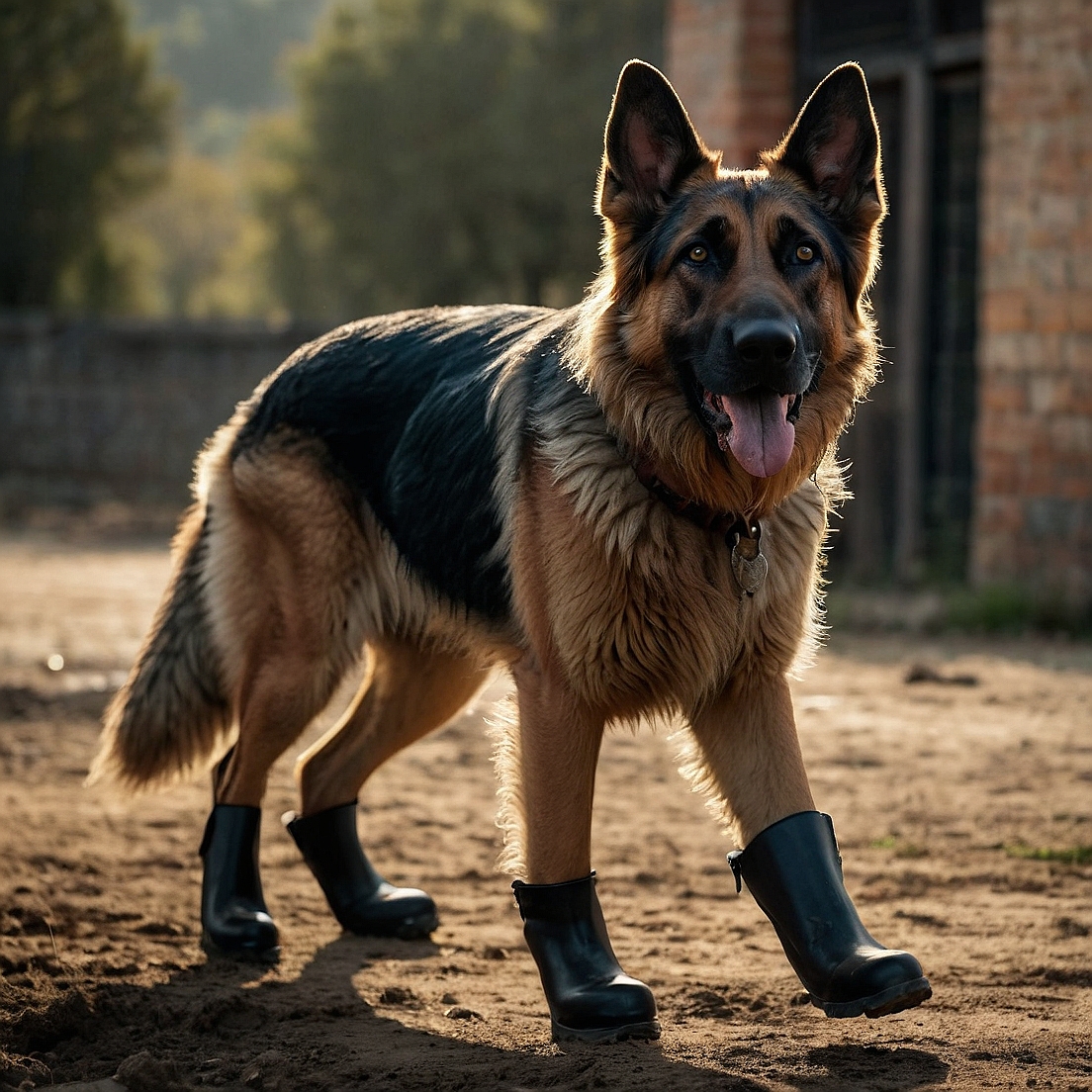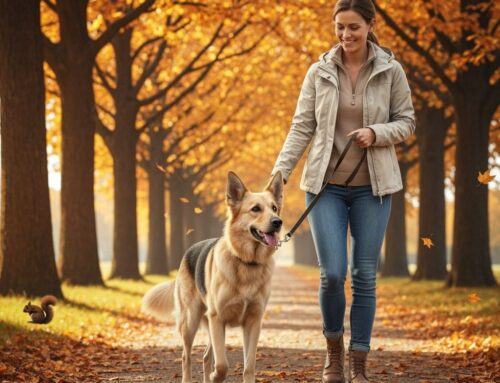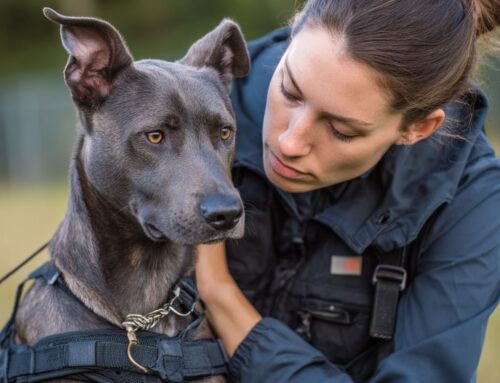As the summer heat intensifies, it’s common for us to feel the scorching pavement beneath our feet, a sensation that sends us scurrying for shade or cooler ground. But while we can easily slip on a pair of shoes or sandals to shield our feet from the heat, our canine companions don’t have that luxury. Their paws, although designed to withstand various rough terrain, are vulnerable to the extreme temperatures of hot pavement. This vulnerability underscores the importance of protecting our dogs’ paws during warmer months. We’ll talk about the importance of paw protection on hot pavement for your pup’s sensitive paws and practical ways to keep your dog safe and comfortable during summer walks.
Understanding Your Dog’s Paw Pads
Before we discuss why dog paw protection is necessary, it’s essential to understand the anatomy and function of a dog’s paw pad. A dog’s paws are not just tough patches of skin; they serve multiple functions.
- Shock Absorption: The thick, spongy pads act as natural shock absorbers, cushioning a dog’s joints and bones from impact as they walk, run, and jump.
- Traction: Paw pads provide the traction dogs need to navigate different surfaces. This is particularly important for activities like running, where stability is crucial.
- Insulation: Paw pads help insulate against cold and, to some extent, heat. However, they have their limits, especially when faced with extreme temperatures.
- Protection: The pads protect the more sensitive parts of the feet from rough surfaces and sharp objects. So you want to make sure you don’t see any cracked paw pads when dealing with your dog.
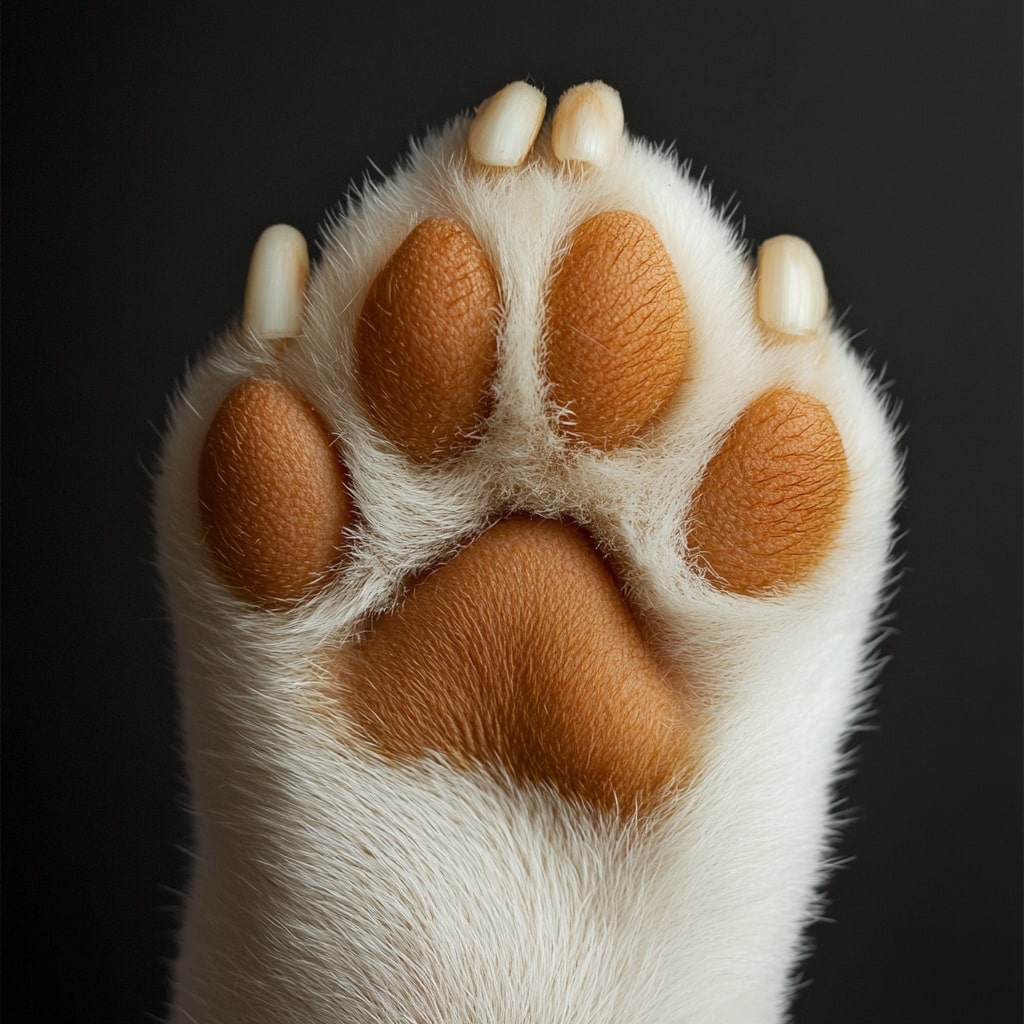
Despite these protective functions, the skin on a dog’s paw pads is not impervious to harm, particularly from hot surfaces.
The Dangers of Hot Pavement
Pavement, particularly asphalt, can absorb and retain a tremendous amount of heat during the summer months. On a 77°F day, the pavement can potentially reach a staggering 125°F. At this temperature, skin destruction can occur in just 60 seconds in your pets. On days when the air temperature reaches 86°F, the pavement can soar to a blistering 135°F. For dogs, this poses a significant risk of burns and injury.
1. Burns and Blisters
One of the most immediate dangers of hot pavement is the risk of burns. A dog’s paw pads, while resilient, can burn if exposed to high temperatures for even a short period. These burns can range from mild dry redness and discomfort to severe blistering and open wounds. Burns are not only painful but can also lead to secondary infections if not treated promptly and properly.
2. Injury and Long-term Damage
Repeated exposure to hot pavement can cause long-term damage to a dog’s paw pads. The constant burning and healing cycle can lead to thickened, cracked, or peeling paw pads. In severe cases, the pad tissue may deteriorate, leading to open sores that take a long time to heal. This damage can cause significant discomfort and make walking or running painful for your dog.
3. Dehydration and Heatstroke
Walking on hot pavement can contribute to a dog’s overall body heat, increasing the risk of overheating and dehydration. Since dogs release heat primarily through panting and the pads of their feet, exposing them to hot surfaces can exacerbate the risk of heat-related illnesses. In severe cases, this can lead to heatstroke, a life-threatening condition that requires immediate veterinary attention.
Signs That Your Dog’s Paws Are Burned
It’s crucial to recognize the signs of burned paws so you can take swift action if necessary in helping dog paw protection. Some of the key indicators include:
- Limping or Refusing to Walk: If your dog suddenly starts limping upon contact or refuses to continue walking, it may be due to the discomfort or pain caused by hot pavement.
- Licking or Chewing at Paws: Dogs often lick or chew their paws when they are in pain. If you notice this behavior after a walk, check for burns or blisters.
- Visible Burns or Blisters: Examine your dog’s paws for any visible signs of burns, such as redness, swelling, or blisters. The pads may also appear darker than usual.
- Paw Pads Peeling or Cracking: In more severe cases, the skin on the paw pads may peel away, or cracked paw pads may develop, exposing the more sensitive tissue beneath.
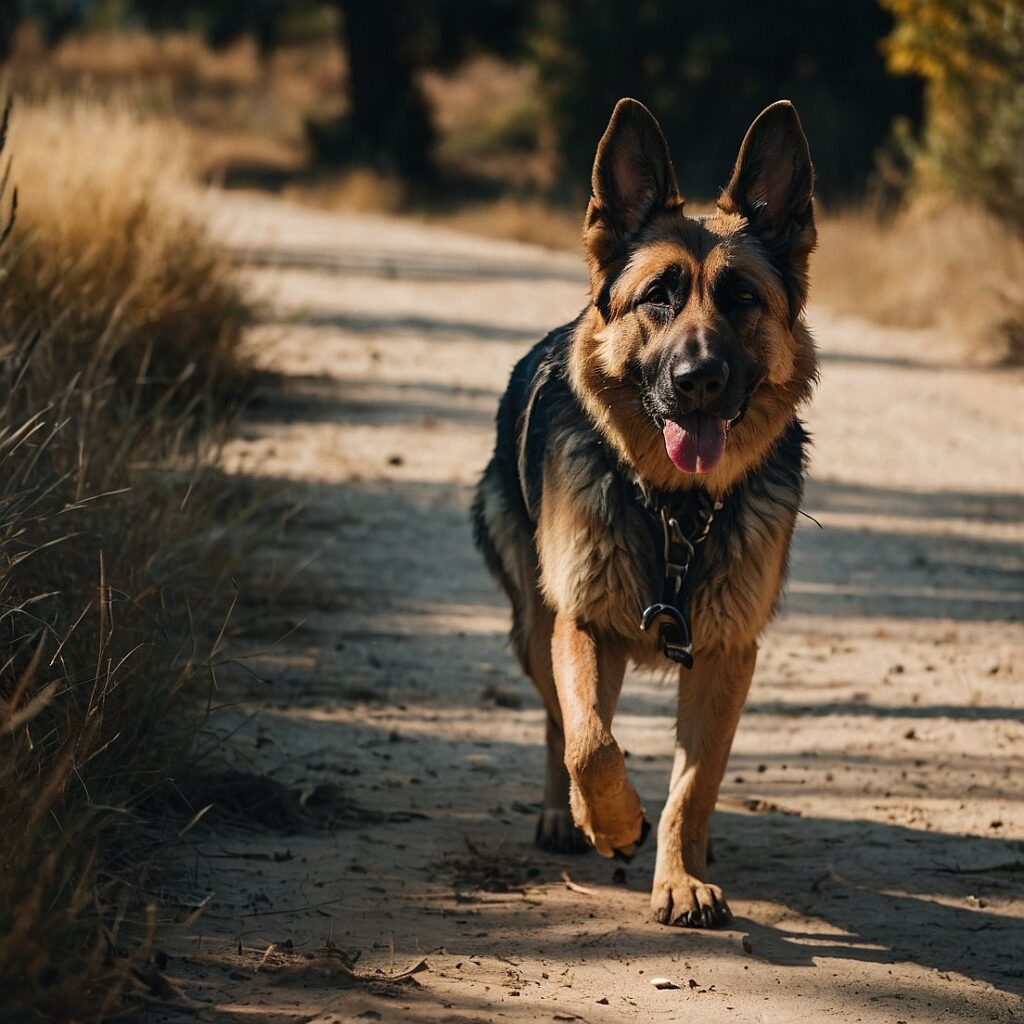
If you suspect your dog has burned its paws, it’s essential to provide first aid and seek veterinary care as needed. For mild burns, you can rinse the paws with cool water and apply a dog-safe antiseptic. Avoid using ice or extremely cold water, as this can cause further damage. Severe burns require immediate veterinary attention
How to Protect Your Dog’s Paws from Hot Pavement
Given the risks associated with hot pavement, taking proactive steps to dog paw protection is essential. Here are some practical ways to keep your dog safe during summer walks.
1. Walk During Cooler Times of the Day
One of the simplest ways to avoid hot pavement is to walk your dog during the cooler parts of the day, such as early morning or late evening. During these times, the pavement is less likely to be scorching, reducing the risk of burns to your pup’s sensitive paws.
2. Use Dog Booties
Dog booties are an excellent option for protecting your dog’s paws from hot surfaces. These specially designed shoes provide a barrier between your dog’s pads and the ground, shielding them from heat and preventing burns and aiding with dog paw protection. When choosing booties, ensure they fit properly and are made of breathable materials to avoid overheating for your pup.
3. Paw Wax
Paw wax is another protective option, particularly for dogs that may not tolerate booties. This wax creates a protective layer on the pads, helping to prevent burns and cracks. It’s important to reapply the wax regularly, especially during longer walks.
4. Test the Pavement
Before heading out for a walk, test the pavement’s temperature with your hand or bare foot. If it’s too hot for you to hold your hand on for more than a few seconds, it’s too hot for your dog’s paws. In such cases, consider walking on grassy areas or waiting until the ground cools.
5. Keep Walks Short
On particularly hot days, it’s wise to keep walks shorter to minimize your dog’s exposure to hot pavement and protect their paws. This reduces the risk of burns and helps prevent overheating or heatstroke.
6. Carry Your Dog
For small dogs, consider carrying them over particularly hot or dangerous surfaces. This may not be practical for larger breeds, but for smaller pups, it’s an effective way to avoid burns.
Additional Considerations for Summer Safety
While paw protection is crucial, it’s also important to consider other aspects of your dog’s well-being during the summer months. Consider these additional cooling tips to keep your dog safe, cool and comfortable during the summer.
Hydration
Always carry water for your dog during walks, and offer it frequently. Dehydration can set in quickly, especially on hot days, so it’s essential to keep your dog well-hydrated.
Shade Breaks
During walks, take breaks in shaded areas to allow your dog to cool down. This helps regulate their body temperature and reduces the risk of overheating.
Watch for Signs of Heat Exhaustion
Be aware of any of the signs of heat exhaustion, such as excessive panting, drooling, weakness, or vomiting. If you happen to notice any one of these symptoms, move your dog to a cool place immediately and offer water. If the symptoms persist, seek veterinary care.
Consider Cooling Products
There are various cooling products available for dogs, such as cooling vests, bandanas, and mats. These products can help regulate your dog’s body temperature and keep them comfortable during outdoor activities.
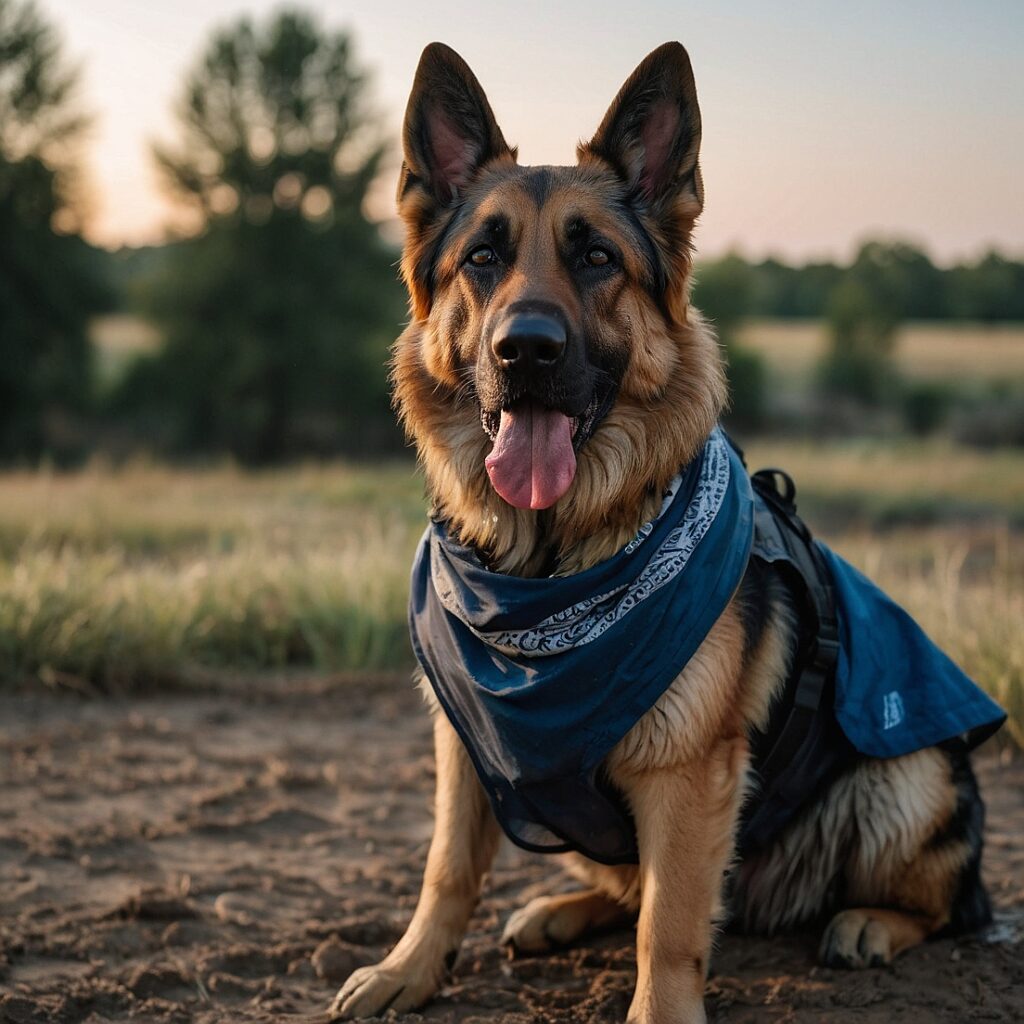
Dog Paw Protection
As responsible pet owners, it’s our duty to ensure the safety and well-being of our furry companions, particularly when the summer sun turns the pavement into a potential hazard. Protecting your dog’s paws from hot pavement is not just about preventing discomfort—it’s about safeguarding their health and preventing serious injuries. By taking simple precautions such as walking during cooler times, using protective gear like booties, and just being mindful of the pavement’s temperature, you can ensure that your dog enjoys their summer walks without the risk of burns or other heat-related issues.
Remember, a little extra care can go a long way in keeping your dog happy, healthy, and safe all year round. So the next time you head out for a walk on a hot day, take a moment to consider your dog’s paws—they’ll thank you for it!



